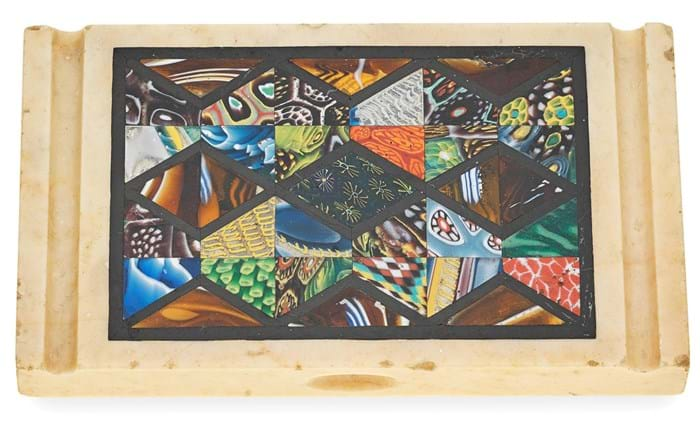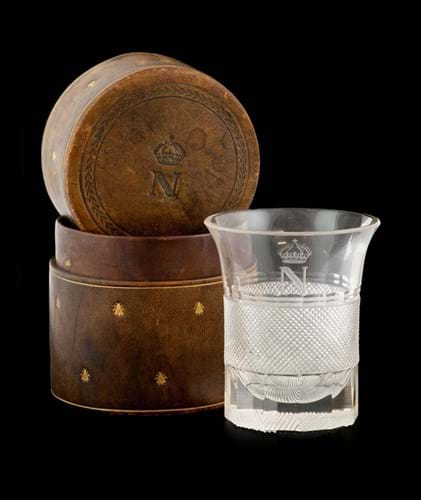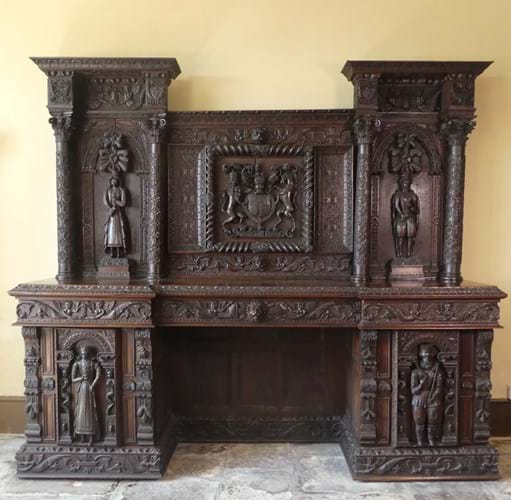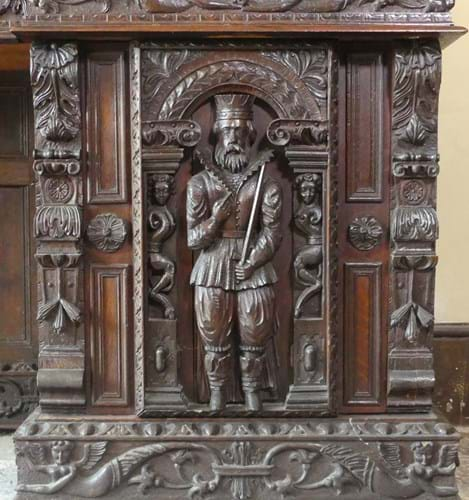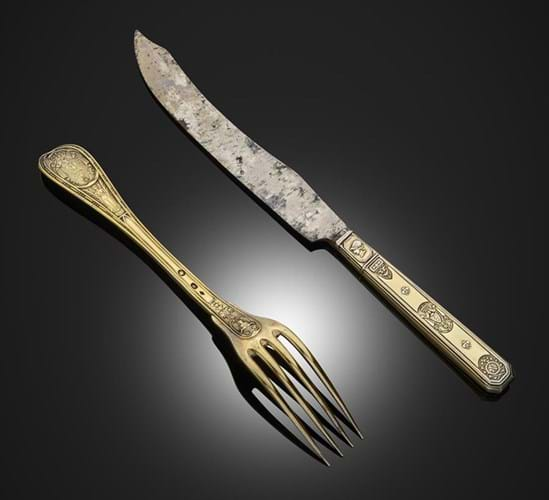
A silver-gilt table knife and fork from a service made for Napoleon Bonaparte – £9000 at Woolley & Wallis.
1. Biennais cutlery – £9000
This French silver-gilt table knife and fork, c.1810, is from a service made for Napoleon Bonaparte. The neoclassical design features the profile of Minerva, the imperial arms of Napoleon, and the initial N in a laurel wreath.
It has Paris marks for Martin Guillaume Biennais (1764-1843), the main supplier of silver and silver-gilt to Napoleon and his family and the firm that made the emperor's crown and sceptre for the 1804 coronation.
The knife and fork were offered for sale at the Woolley & Wallis Silver & Vertu sale in Salisbury on July 12 with a guide of £3000-5000 and sold for £9000.
They came by descent from Alfred William Weston (1892-1950), a businessman, entrepreneur and illustrator who was employed by John Logie Baird to edit Television, the world's first television journal. He is thought to have acquired them in the 1920s.
2. Paperweight with Roman glass – £11,000
This unusual Grand Tour paperweight is made from fragments of Roman mosaic, millefiori, spiral twist and reticelli glass. At the end of the 18th and into the 19th century many ancient Roman sites were excavated, including the ruins of Pompeii and Herculaneum.
Excavated fragments of mosaic glass such as this, mostly from bowls and dishes, were frequently polished and mounted like precious gems and cameos. Others were reheated and pressed flat before being cut into panels suitable for mounting into tabletops or smaller objects.
This paperweight is possibly by Francesco Sibilio (1784-1859), a marble craftsman and dealer in Rome catering to the tourist trade. He was the first known craftsman to use fragments of ancient glass as inlays in the manner of specimen marbles. At a themed Grand Tour sale at Bonhams on July 14, it was estimated at £1000-1500, but took £11,000.
3. Historical Virginia manuscript – £80,000

Manuscript titled ‘Certaine directions for the sending of Men, Comodities, & Cattle to Virginia’ – £80,000 at Forum Auctions.
The history of the colonisation of Virginia by the Virginia Company in the early 17th century is a tale of repeated setbacks and failure. Most colonists were unsuited to farming, the weather was seldom kind and relations with the First Nations people were poor. Mortality rates were extremely high.
The colonies main hope of survival were the supply ships from the Old World that periodically brought provisions. This rare manuscript titled in a secretarial hand Certaine directions for the sending of Men, Comodities, & Cattle to Virginia, offered at Forum Auctions in London on July 14, hints at some of the huge challenges faced in the Jamestown experiment.
Probably written around the time of the shipwreck of the Third Supply (that led to the ‘Starving Time’ in the winter of 1609-10) it issues advice to prospective ‘passengers’ by drawing on the experience of previous hardship.
Over 10 pages the author tells passengers when to arrive (‘beginninge of July’), the types of farming skills required (‘should be lustie’), what to do on first arrival (‘let them take good care of lying on the ground’), and the commodities suitable for trading (cattle ‘are of great prize in Virginia’).
As an item of great interest to historians of the history of the North American colonies, it was estimated at £4000-6000 but sold for £80,000.
4. A Napoleonic glass tumbler – £8000
This glass tumbler, engraved with a crowned N over a band of diamond cutting, contained in a tooled leather cylindrical travelling case is of a type that accompanied Napoleon on his campaigns. According to the Fondation Napoleon, who hold a similar example in their collection, these glasses would likely have been used during Napoleon’s last campaigns of 1814 and 1815, and only a handful of other examples are known.
The glass was made by Montcenis, the crystal manufacturer established in 1787 who produced the majority of the glassware for the imperial household, as they had for the monarchs of the Ancien Régime.
This example, from a family collection in the northwest of England, had an estimate of £1000-1500 at The Summer Fine Sale at Tennants in Leyburn on July 16. It made £8000.
5. Oak sideboard with Jacobean carvings – £14,500
As Sand, an Elizabethan house in East Devon which has been in the Huyshe family since 1560, is being sold for the first time in over 460 years, Chilcotts of Honiton sold much of the contents on July 16.
The highlight was this sideboard which, although made in the 19th century, included elements from an overmantel that was part of the property rebuilt in 1594 by Roland Huyshe.
Although it was sold as a whole, the primary interest and the value was in these carved panels – one depicting the royal Stuart coat of arms – and a series of figures wearing the finest fashions of the late 16th early 17th centuries.
It was expected to sell for between £1500-2000 but went on to take £14,500.


